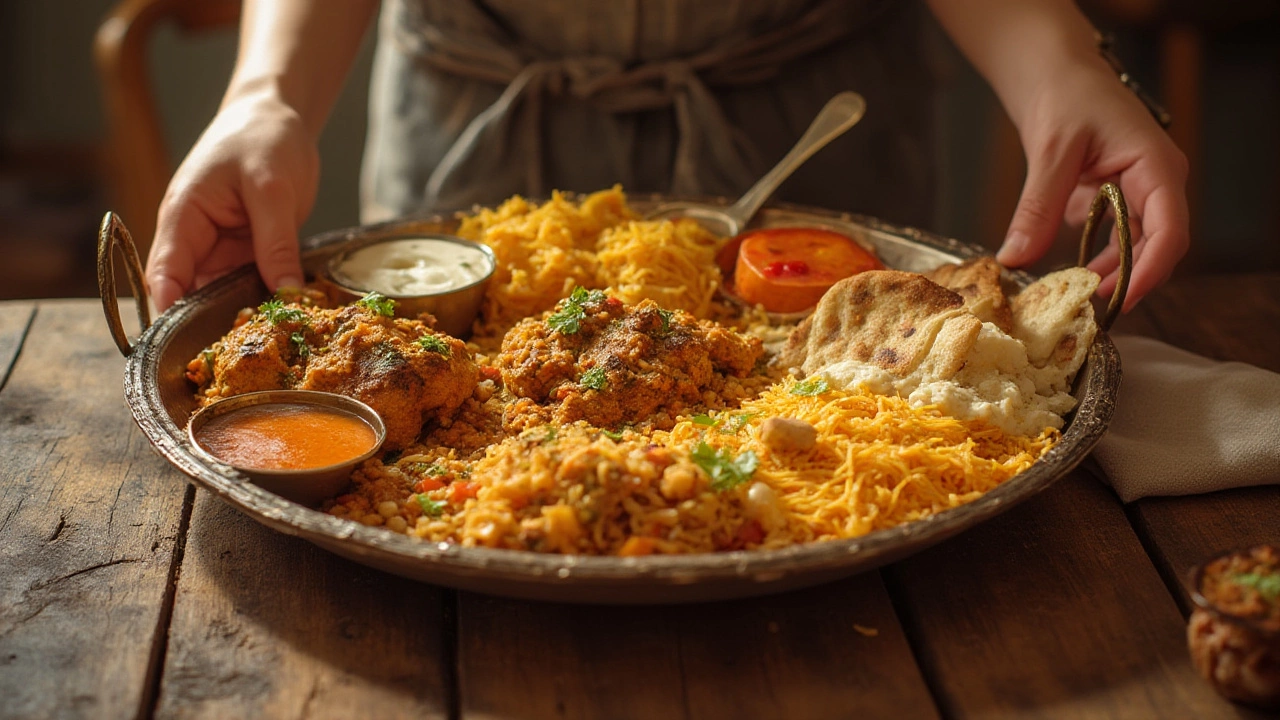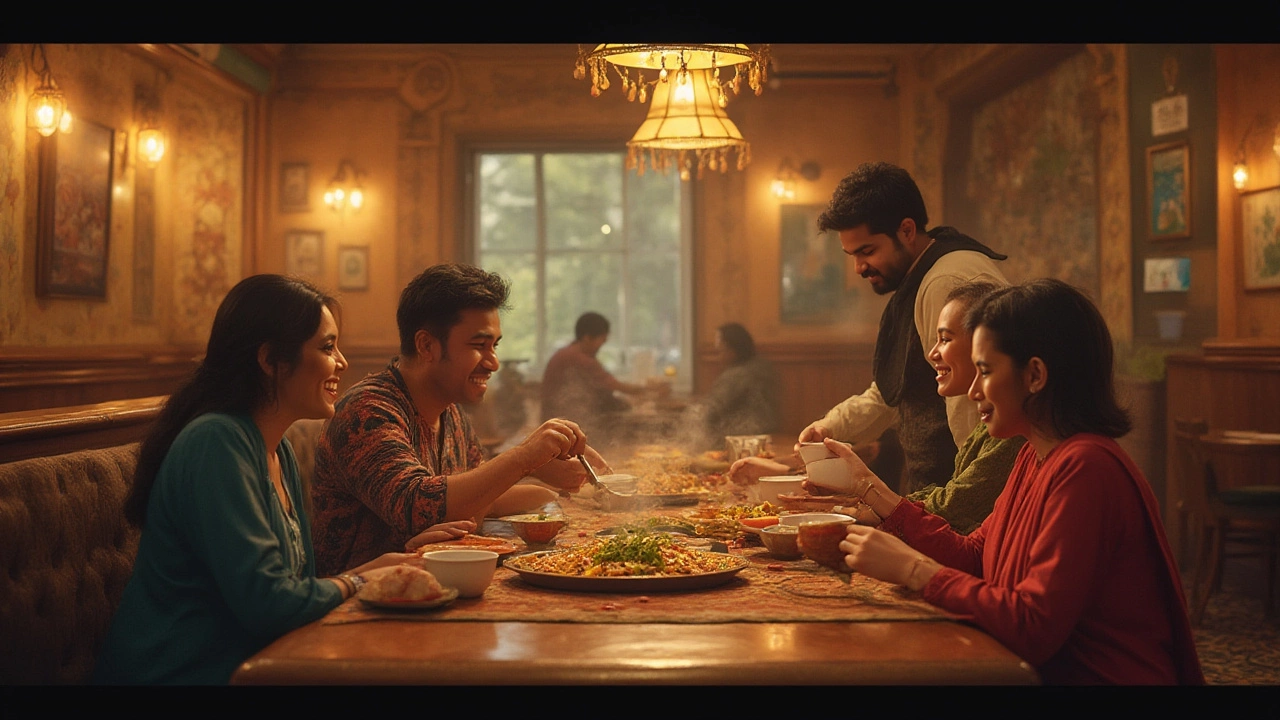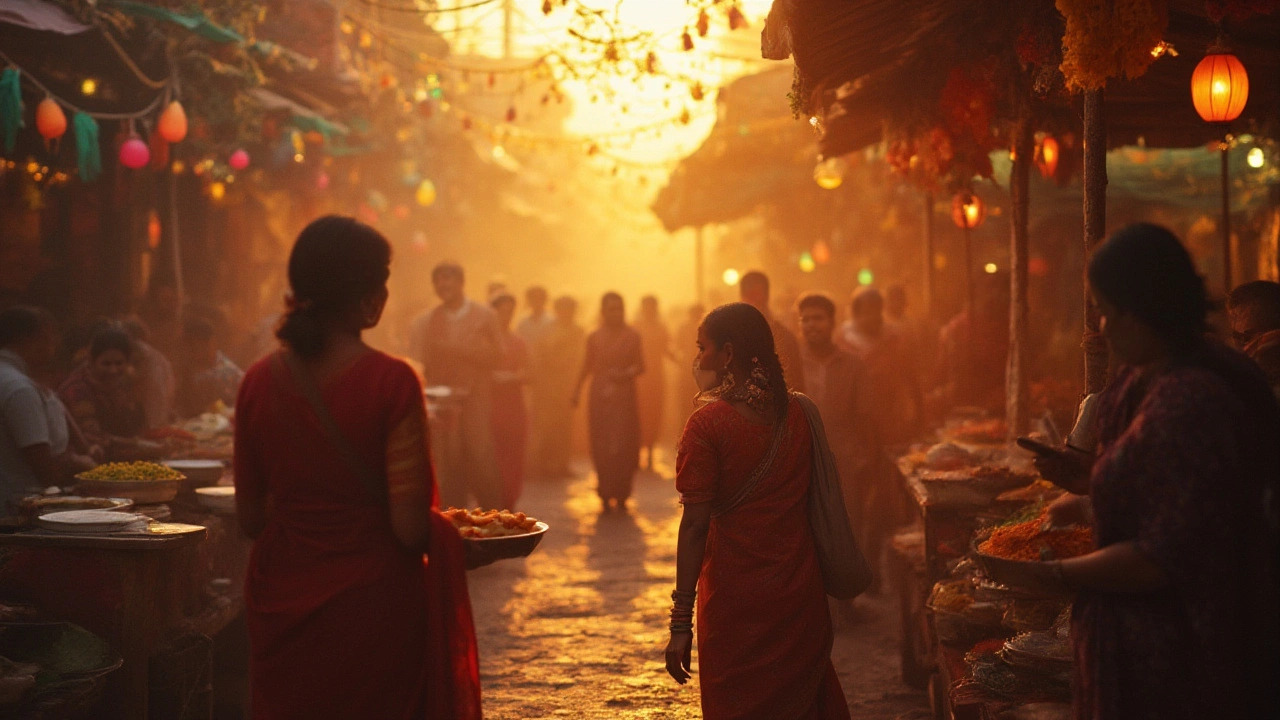Some food questions will never get a boring answer—especially if you're talking about India. Ask a hundred people, "What is the nicest Indian dish?" and you'll spark debates as hot as the curries themselves. Sure, opinions fly, but there are secret reasons why one plate captures India's heart and why others rule at weddings, festival buffets, and family feasts. Indian food isn’t a single flavor—it's thousands. It’s tradition wrapped in spice, innovation served with a splash of chutney, and sometimes, a tangle of history and memory on your plate. If you’re expecting an easy answer, well, keep reading because things are about to get deliciously complicated.
The Titans of Indian Cuisine: What Deserves the Top Spot?
When it comes to the "nicest" Indian dish, let’s start with a simple truth: no single curry speaks for over 1.4 billion people. That’s wild, right? Still, a handful of dishes always stand out, winning hearts (and tastebuds) from Kashmir to Kanyakumari. First on the scene: Butter Chicken. Created by accident in Delhi in the 1950s—when a chef tossed leftover tandoori chicken pieces into a buttery tomato gravy—this dish totally changed the game. Today, it’s the gold standard of North Indian comfort. Creamy, mildly spiced, and impossible to dislike, Butter Chicken is the kind of thing people go out of their way for. Tourists ask for it by name, and Indian families make it for celebrations.
But that's not the end of the story. Travel 2,000 kilometers south and you’ll hit dosa country—think of dosas as the Indian crepe, impossibly thin and crisp, filled with spiced potato. Dosas come with coconut chutney and sambar (a tangy lentil stew). And if you’re in Tamil Nadu or Karnataka, you'd probably say dosa beats every curry, every day. Fun fact: in a 2023 Zomato food trend survey, dosas showed up in the top three most-ordered breakfasts, particularly in major cities like Bangalore and Chennai.
How about street food? Pav Bhaji, a chaos of buttery mashed veggies served with toasted bread, owns the streets in Mumbai. Chole Bhature—fluffy fried bread with spicy chickpeas—can demolish your hunger at lunchtime in Delhi or Amritsar. Biryani gets a mention wherever you go. Hyderabad’s biryani, built from gently layered rice and marinated meat, is a symbol of the city, served at everything from weddings to lunch trucks. The act of “biryanifying” plain rice is considered a culinary upgrade in many Indian homes, and for many, biryani IS the answer to the "nicest dish" question. It’s the only Indian dish that’s topped annual Uber Eats popularity lists in multiple countries, including the UAE and UK in 2024.
And don’t sleep on samosas—those crisp, triangular snacks with secret spiced fillings. Every corner shop sells them, and every home swears their version is best. Even McDonald's in India sells samosa-inspired pies. This leads to a real, unavoidable fact: ‘nicest’ isn’t a set thing. For every fan of a rich, slow-cooked Rogan Josh, there’s someone else whose heart beats for tangy chaats or coastal fish curries that taste like sunshine and monsoon rolled into one.
| Dish | Region | Main Flavors | Popularity Index (2024) |
|---|---|---|---|
| Butter Chicken | North India | Rich, creamy, mildly spiced | 98/100 |
| Dosa | South India | Crispy, tangy, savory | 95/100 |
| Biryani | Pan-Indian, esp. Hyderabad | Spiced, aromatic, layered | 100/100 |
| Pav Bhaji | West India | Spicy, buttery, tangy | 93/100 |
| Samosa | Pan-Indian | Spiced, crispy, savory | 89/100 |

Behind the Flavor: What Really Makes an Indian Dish Stand Out?
With all these contenders, let’s get into what actually separates "nice" from just "average." First, Indian dishes aren’t about heat—they’re about layers. Think of Indian cooking as assembling a playlist: sweet, sour, spicy, salty, and umami all mingle on the same track. That’s how Indian food hooks you. For example, chaat—those wild street snacks—hit every taste-bud button at once. Pani puri, with its crunchy shell and burst of spicy-tangy water, is literally eaten for the thrill.
Most “nicest dish” arguments come down to experience. A Hyderabadi biryani needs more than twenty spices, and a real chef gently dum-cooks it so every grain takes on flavor. Or take Bengali fish curry—using mustard oil and fresh river fish creates a bang of sharpness that you just don’t find in Western food. Kerala’s Avial? That’s a rainbow of vegetables stewed with coconut, curry leaves, and just enough chili to wake things up. Spot a trend here? Variety, balance, and boldness—all crammed into a single bowl.
And get this: science backs up India’s flavor power. A 2022 study in the journal Flavor found that Indian recipes purposely avoid overlapping flavors, unlike Western styles that group them. That’s why a gobi manchurian or dal makhani always taste complex and new even if you’ve had them a dozen times. It’s a little kitchen mischief built into tradition.
For health-watchers, not all Indian food needs to be heavy or fried. Dal tadka, a staple lentil dish, is high in protein and iron. Sambar, made with tamarind and lentil, is filling but light. Even ghee—often feared by outsiders—has healthy fats when eaten in tiny amounts, according to a 2024 Lancet Nutrition special on the Indian diet.
One epic tip if you’re ordering at an Indian restaurant (or traveling): always ask for a “thali.” It’s basically a round silver plate loaded with tiny tastes of everything local—veggies, lentils, rice, bread, pickle, maybe a meat or sweet. Thalis capture India’s food philosophy: why stick to one thing when you can have ten?
| Indian Dish | Main Ingredients | Calories (avg) | Proteins (g) |
|---|---|---|---|
| Dal Tadka | Lentils, spices | 180 | 12 |
| Dosa with Sambar | Rice, lentils, veggies | 300 | 8 |
| Butter Chicken | Chicken, tomato, butter, cream | 450 | 25 |
| Pav Bhaji | Veggies, bread, butter | 400 | 10 |
| Biryani (Chicken) | Rice, chicken, spices | 600 | 20 |

How to Hunt Down and Truly Enjoy India’s Nicest Dishes
Chasing the best Indian food isn’t about fancy restaurants. Street-side chaat stalls, modest dhabas, and home kitchens often outshine five-star hotels when it comes to jaw-dropping taste. Some people swear by the lassi stand outside the Golden Temple in Amritsar. Others claim you haven’t lived until you’ve tried fresh appam (a soft, bowl-shaped rice pancake) at a breakfast shack in Kerala, with coconut milk trickling down the side.
If you’re feeling overwhelmed by huge menus (who isn’t?), look for dishes marked as “house specialties” or “chef’s favorites.” In India, chefs take pride in their signature touch. Each region also throws in its own twist. Want to order biryani? Look for “Dum Biryani” on the menu—that means it’s been slow-cooked with the lid sealed, so every bite comes loaded with flavor. Bonus tip: In Hyderabad, real biryani comes with mirchi ka salan (a spicy peanut-chili curry) and cooling raita.
The same goes for dosa—a masala dosa in Karnataka might use a fiery potato filling, while Tamil versions are subtler, letting chutneys steal the show. Even “simple” butter chicken has countless versions: some richer, some tangier, some pale orange, some firetruck-red. If you ask your server for the story behind a dish, you’ll often get tips about homemade spice blends or family recipes that have ruled the kitchen for generations. Bonding over food isn’t just recommended, it’s expected.
Curious to take things truly next level? Try eating with your hands when you can (right hand only, please!). It’s not just for tradition — touch actually changes how your brain interprets flavor, making the experience more immersive. Just remember—nobody cares if you’re messy as long as you’re enjoying yourself.
And here’s something nobody tells you: sometimes the “nicest” Indian dish is totally seasonal, depending on festivals or local harvests. In spring, sweet mangoes show up everywhere—from lassi to curry and even pickles. Monsoon calls for hot pakoras (fritters) with masala chai—think of it as the Indian answer to British tea time. Winter means hearty, warming stews and rich desserts like gajar ka halwa (carrot pudding). Join a festival or a family dinner and you’ll see menus change in sync with the calendar, each new dish showing up just for a few weeks, making the hunt for the best even more fun.
Talk to locals if you’re traveling—most will steer you toward joints that don’t even have business cards. Trust Google Maps reviews, but also trust your nose. Follow the crowd, and if you spot a line, get in it. When in doubt, order small portions and share with friends. The beauty of Indian food isn’t just in finding an answer; it’s in tasting your way through the journey, one spicy bite at a time.
